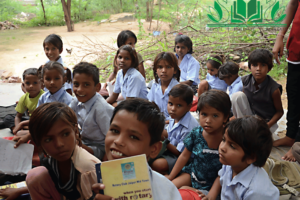
What are the best methods to teach in the rural schools of India?
Teaching in rural schools in India can present unique challenges due to various factors such as limited resources, infrastructure, and socioeconomic conditions. However, several effective methods can help educators make a positive impact in these settings. Here are some best practices for teaching in rural schools in India:
1. Understand the local context:
Gain a thorough understanding of the community’s culture, customs, and specific challenges. This knowledge will help you tailor your teaching methods and content to meet the needs of the students.
2. Engage the community:
Involve parents, community leaders, and local volunteers in the education process. Organize regular meetings, workshops, and events that encourage community participation and support. This collaborative approach fosters a sense of ownership and improves the overall learning environment.
3. Use locally relevant and inclusive materials:
Develop or adapt teaching materials reflecting students’ cultural backgrounds, experiences, and languages. Incorporate local examples, stories, and contexts to make the content more relatable and meaningful.
4. Make learning interactive and experiential:
Encourage active participation through hands-on activities, group work, and real-life experiences. Engage students in practical exercises, field trips, and project-based learning to promote deeper understanding and application of knowledge.
5. Incorporate technology effectively:
Leverage technology to overcome resource constraints. Utilize digital resources, educational apps, and online platforms to enhance teaching and learning experiences. However, ensure that technology aligns with the available infrastructure and is accessible to all students.
6. Focus on foundational skills:
Emphasize building strong foundational skills in literacy, numeracy, and critical thinking. These skills provide a solid base for further learning and empower students to overcome educational barriers.
7. Personalize instruction:
Recognize that students in rural schools may have diverse learning abilities and backgrounds. Provide individualized support, including extra help for struggling students and additional challenges for advanced learners. Differentiate instruction to cater to the unique needs of each student.
8. Teacher professional development:
Support ongoing professional development for teachers. Provide training, mentoring, and access to resources that enhance their pedagogical skills, subject knowledge, and understanding of innovative teaching methods.
9. Foster a supportive learning environment:
Create a safe, inclusive, and nurturing classroom environment that encourages active student participation, collaboration, and mutual respect. Celebrate student achievements and foster a love for learning.
10. Address infrastructure challenges:
Advocate for improved infrastructure, such as safe school buildings, clean water supply, sanitation facilities, and access to electricity. Collaborate with local authorities, NGOs, and other stakeholders to address these issues.
Effective teaching in rural schools requires patience, adaptability, and a deep commitment to making a difference in students’ lives. By employing these strategies, you can help bridge the education gap and empower students in rural India.




